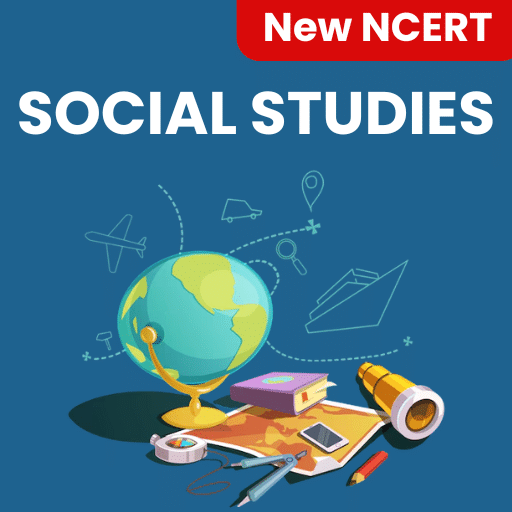Best Study Material for Class 6 Exam
Class 6 Exam > Class 6 Notes > Science Olympiad Class 6 > Olympiad Notes: Food and its Components
Olympiad Notes: Food and its Components | Science Olympiad Class 6 PDF Download
| Table of contents |

|
| Introduction |

|
| Component of Food |

|
| Carbohydrates |

|
| Fat |

|
| Protein |

|
| Vitamins |

|
| Minerals |

|
| Balanced Diet |

|
| Obesity |

|
| Deficiency Diseases |

|
Introduction
- Food consumed daily for energy is termed as food.
- Different regions in India have diverse dietary preferences.
- Northern India favors chapattis, dal, and vegetables like brinjal, lady’s finger, and potatoes.
- Southern India leans towards rice, sambhar, and uttapam due to regional food availability.
- Fermented foods such as curd, idli, and dosa are also common.
- Meat, chicken, and fish dishes are part of the diet in various areas.
Component of Food

- Food consists of multiple components sourced from plants or animals.
- Essential components in food, known as nutrients, are vital for nourishment and body development.
- Nutrients serve distinct purposes in the body:
- Energy-providing nutrients include carbohydrates and fats.
- Proteins are vital for bodybuilding and development.
- Vitamins contribute to the body's defense against diseases.
- Minerals are necessary for growth and maintenance of the body.
Carbohydrates

- Carbohydrates serve as the primary food component, supplying energy in the form of glucose.
- Starch and sugar-containing foods are rich sources of carbohydrates, such as potatoes, rice, bread, fruit juices, and wheat.
- Testing for starch involves using diluted iodine solution:
- Obtain a raw, peeled potato slice and add 2-3 drops of dilute iodine solution.
- Observe the color change from orange to blue-black, indicating the presence of starch.
Fat

- Fat serves as an energy source for the body, often providing more energy than carbohydrates.
- However, excessive fat consumption can pose health risks like high cholesterol and heart diseases.
- Food items containing fat include ghee, cheese, butter, oil, and cream.
- Testing for the presence of fat involves a simple procedure:
- Take a piece of butter and rub it on a piece of paper at the center.
- Notice the appearance of an oily patch on the paper, which indicates the presence of fat.
 |
Olympiad Test: Components of Food
|
Start Test |
Start Test
Protein

- Proteins are essential for building and repairing body tissues, including nails, hair, skin, muscles, and blood.
- Food sources rich in protein include eggs, meat, fish, oats, lentils (dal), almonds, milk, and yogurt.
- Testing for the presence of protein involves a specific procedure:
- Grind the food sample finely (e.g., almonds) and place it in a clean test tube. Add 10 drops of water.
- Use a dropper to add 2 drops of copper sulphate solution and shake the mixture thoroughly.
- Then add 10 drops of caustic soda solution and shake the mixture well.
- The appearance of a violet color indicates the presence of proteins in the food sample.
Vitamins

- Vitamins are essential for growth, development, and bolstering the body's immunity against diseases.

- Among the vitamins, there exists a group known as Vitamin B-complex, comprising eight distinct vitamins: Vitamins B1, B2, B3, B5, B6, B7, B9, and B12.
- The B vitamins play a crucial role in cell metabolism, contributing significantly to various metabolic processes within the body.
Minerals
- Minerals, although required in small amounts, are indispensable components for the proper growth and maintenance of the body.
- Essential minerals crucial for bodily functions include calcium, magnesium, phosphorus, sodium, iron, and zinc.
- These minerals play vital roles in various bodily processes, contributing significantly to overall health and maintenance of bodily functions.
Balanced Diet
- The daily food intake of an individual is referred to as a diet.
- A balanced diet includes all essential nutrients in appropriate quantities required for proper body growth and maintenance.
- In addition to nutrients, a balanced diet should incorporate roughage (raw uncooked vegetables) and adequate water intake.
- The composition of a balanced diet is influenced by factors such as age and the nature of physical activity performed.
- For instance, athletes may increase carbohydrate intake for heightened energy, while older individuals may opt for easily digestible foods.
- The skins of many fruits and vegetables contain substantial amounts of vitamins and minerals.
- Over-processing vegetables, through continuous washing, boiling, or overcooking, can lead to a loss of valuable nutrients present in them.
 |
Download the notes
Olympiad Notes: Food and its Components
|
Download as PDF |
Download as PDF
Obesity
- Fat contains higher energy levels compared to carbohydrates, yet excessive fat consumption leads to fat accumulation in the body.
- Obesity results from an excessive buildup of fat in the body.
- Junk food and oily food typically contain high amounts of fats, contributing to potential health issues.
- Balancing fat intake requires utilizing it as physical energy through activities and exercise.
Deficiency Diseases
- Deficiency diseases arise from prolonged lack of specific nutrients or minerals in one's diet.
- Insufficient intake can impact various aspects of health, affecting the skin, hair, face, eyes, bones, teeth, and overall growth.
- Deficiencies can involve one or multiple nutrients, leading to distinctive health issues.
- Balancing the diet helps overcome deficiencies. For instance, a deficiency in both carbohydrates and proteins can result in significant thinness and weakness in an individual.
Deficiency of vitamins is shown in table

Deficiency of minerals shown in table

The document Olympiad Notes: Food and its Components | Science Olympiad Class 6 is a part of the Class 6 Course Science Olympiad Class 6.
All you need of Class 6 at this link: Class 6
|
39 videos|112 docs|89 tests
|
FAQs on Olympiad Notes: Food and its Components - Science Olympiad Class 6
| 1. What are the main components of food? |  |
| 2. What is a balanced diet? |  |
Ans. A balanced diet is a diet that contains all the essential nutrients in the right proportions to meet the body's needs. It includes a variety of foods from different food groups, such as fruits, vegetables, grains, proteins, and dairy products.
| 3. How can obesity be prevented? |  |
Ans. Obesity can be prevented by maintaining a healthy diet and engaging in regular physical activity. Eating a balanced diet that is low in fats and sugars, and high in fruits, vegetables, and whole grains can help prevent obesity. Additionally, engaging in at least 150 minutes of moderate-intensity physical activity per week can also contribute to weight management.
| 4. What are deficiency diseases? |  |
Ans. Deficiency diseases are diseases that occur due to a lack of specific nutrients in the diet. For example, a deficiency of vitamin C can lead to scurvy, a deficiency of vitamin D can lead to rickets, and a deficiency of iron can lead to anemia.
| 5. Why are vitamins and minerals important for our body? |  |
Ans. Vitamins and minerals are important for our body because they play crucial roles in various bodily functions. They help in maintaining a strong immune system, supporting growth and development, regulating metabolism, aiding in the formation of red blood cells, and promoting overall health and well-being. A deficiency of vitamins and minerals can lead to various health problems and diseases.
Related Searches


























